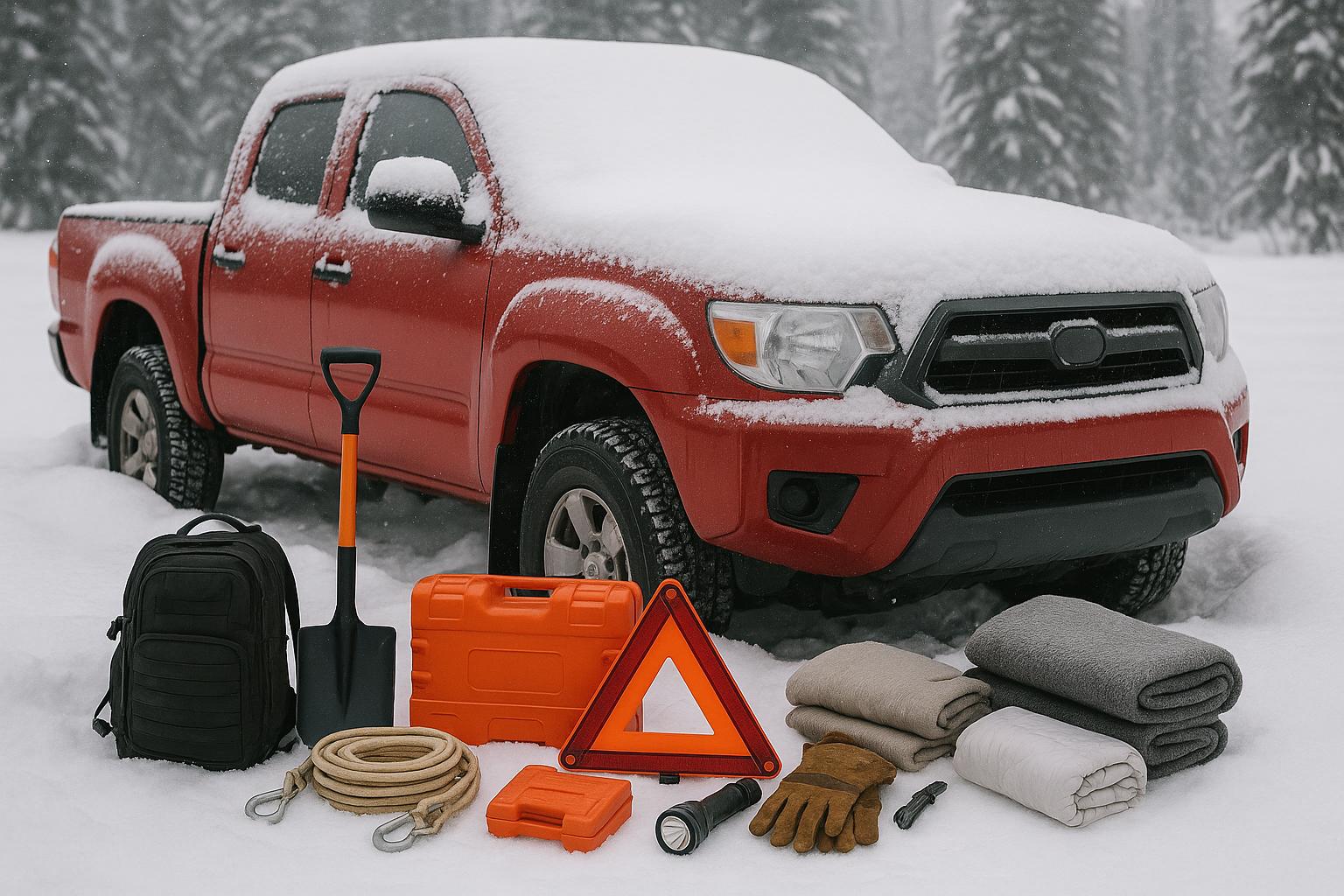When winter sets in across Canada, the roads can quickly turn from manageable to treacherous. Snow, ice, and frigid temperatures put both your vehicle and your survival readiness to the test. For preppers, a vehicle isn’t just transportation—it’s a lifeline. Whether you’re commuting, bugging out, or simply heading to town for supplies, being prepared for winter conditions can make the difference between inconvenience and a real emergency.
Step 1: Winterize Your Vehicle
Start with the basics: make sure your vehicle itself is ready to handle the harshest Canadian weather.
- Winter Tires – All-season tires are not enough for Canadian winters. Invest in quality winter tires with the snowflake symbol. They grip better on ice and snow, shortening your stopping distance dramatically.
- Battery Check – Cold drains battery strength. Have yours tested and replace if it’s more than four years old. Carry a portable jump starter in case no one is around to give you a boost.
- Fluids & Oil – Switch to winter-grade oil if your vehicle requires it, and top up antifreeze and windshield washer fluid rated for −40°C.
- Wipers & Lights – Replace wipers with winter blades and check that all lights are working. In poor visibility, you’ll be relying on them.
- Rust Protection – Road salt is hard on vehicles. Consider a protective undercoating or frequent rinses to extend the life of your vehicle.
Step 2: Build a Comprehensive Winter Emergency Kit
This is where preppers can shine. Think beyond the basics and prepare for scenarios where you might be stranded overnight—or even several days—until help arrives. A well-stocked winter kit should cover warmth, sustenance, mobility, communication, and medical needs.
Warmth & Shelter
- Wool blankets or thermal emergency blankets – Unlike synthetics, wool retains heat even when damp.
- A sub-zero sleeping bag – Keep one rolled up in your trunk; it can mean the difference between comfort and hypothermia.
- Hand warmers & foot warmers – Compact and effective. Carry a dozen or more.
- Extra clothing layers – Toques, scarves, mittens, and wool socks stored in vacuum-sealed bags.
Food & Water
- High-calorie rations – Granola bars, trail mix, jerky, chocolate, and freeze-dried meals if you carry a small stove.
- Canned goods with pull-tab lids – A few cans of beans, stew, or chili can provide both calories and warmth when heated.
- Water storage – Store bottles in insulated bags or wrapped in blankets to reduce freezing. Rotate every few weeks if kept in the trunk.
- Metal cup or pot – For melting snow into drinkable water over a small heat source.
Tools & Mobility
- Snow shovel – Compact folding models work, but a sturdy full-size one is more reliable.
- Ice scraper and snow brush – Heavy-duty versions are worth the extra cost.
- Traction aids – Sand, non-clumping kitty litter, or traction mats for getting unstuck.
- Tow strap or recovery rope – Rated for your vehicle’s weight.
- Jumper cables – Even if you carry a portable booster, having both is ideal.
Power & Light
- Flashlights and headlamps – LED models with spare batteries. Headlamps keep your hands free.
- Candle-in-a-can or survival candles – Provides light and minimal heat in a safe container.
- Battery bank / solar charger – For keeping phones and radios powered.
Medical & Safety
- First Aid Kit – Stocked with basics plus items specific to winter (burn gel for frostbite, rehydration salts).
- Medications – Keep a small supply of personal prescriptions in sealed containers. Rotate often.
- High-visibility vest & reflective triangles – Essential for roadside breakdowns, especially in snowstorms.
- Whistle or signal mirror – For drawing attention if visibility is poor.
Fire & Heat
- Stormproof matches, lighters, and fire starter – In case you must leave the vehicle and create a heat source.
- Small camp stove or folding stove with fuel tabs – Allows you to melt snow or heat food. Use only with proper ventilation.
Navigation & Communication
- Paper maps – Electronics can fail in the cold. Keep a road atlas or provincial map.
- Portable radio – AM/FM or weather band, preferably hand-crank or solar-powered.
- Notebook & pencil – Record directions, notes, or leave a message if you must abandon the vehicle.
Step 3: Maintain Situational Awareness
Winter isn’t just about mechanical readiness—it’s also about planning.
- Fuel Strategy – Keep your tank at least half full at all times to prevent fuel line freeze-up and ensure you have range if you need to evacuate.
- Weather Monitoring – Check forecasts before trips and carry a battery-powered weather radio for updates if you lose cell service.
- Route Planning – Stick to main roads during storms—they’re cleared first. Always let someone know your destination and ETA.
Step 4: Train for Worst-Case Scenarios
The gear won’t help if you don’t know how to use it. Practice safe winter driving techniques:
- Controlled Braking – Learn to steer into a skid and avoid slamming the brakes on ice.
- Emergency Stops – Practice controlled stops in a safe area like an empty snowy lot.
- Self-Rescue – Know how to use traction mats or kitty litter to get unstuck without burning out your tires.
- Sheltering in Place – Learn how to safely run your vehicle for heat while avoiding carbon monoxide buildup (clear the exhaust pipe and crack a window).
A Prepper’s Perspective
For Canadian preppers, your vehicle is part of your survival plan. In a winter emergency, you may have to spend the night in it, use it to evacuate, or rely on it to get medical help. That means treating it as more than just a ride—it’s a rolling survival shelter. By winterizing your vehicle, stocking a robust emergency kit, and training yourself for worst-case scenarios, you can ensure that no matter what the Canadian winter throws at you, you’ll be ready.



